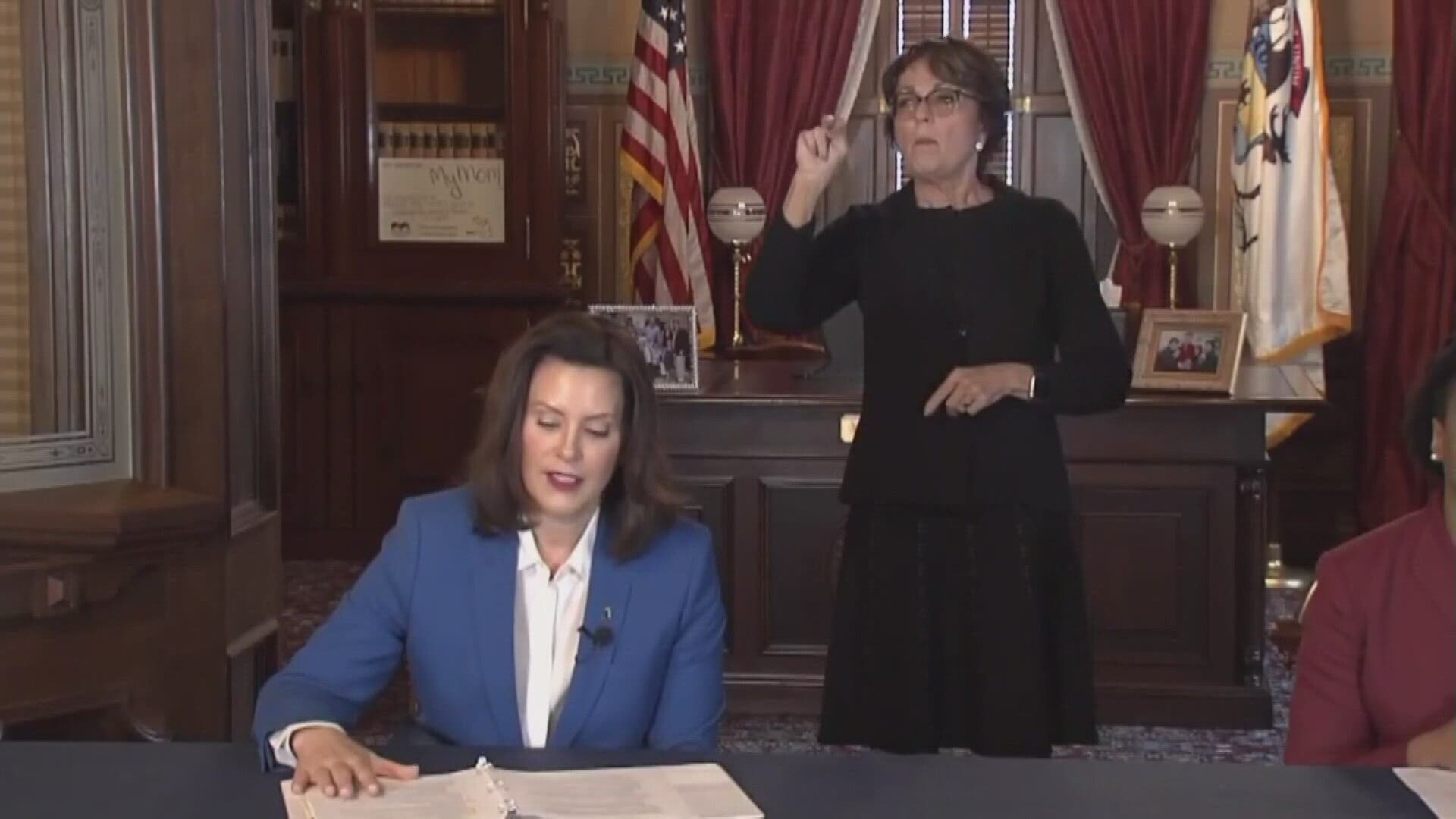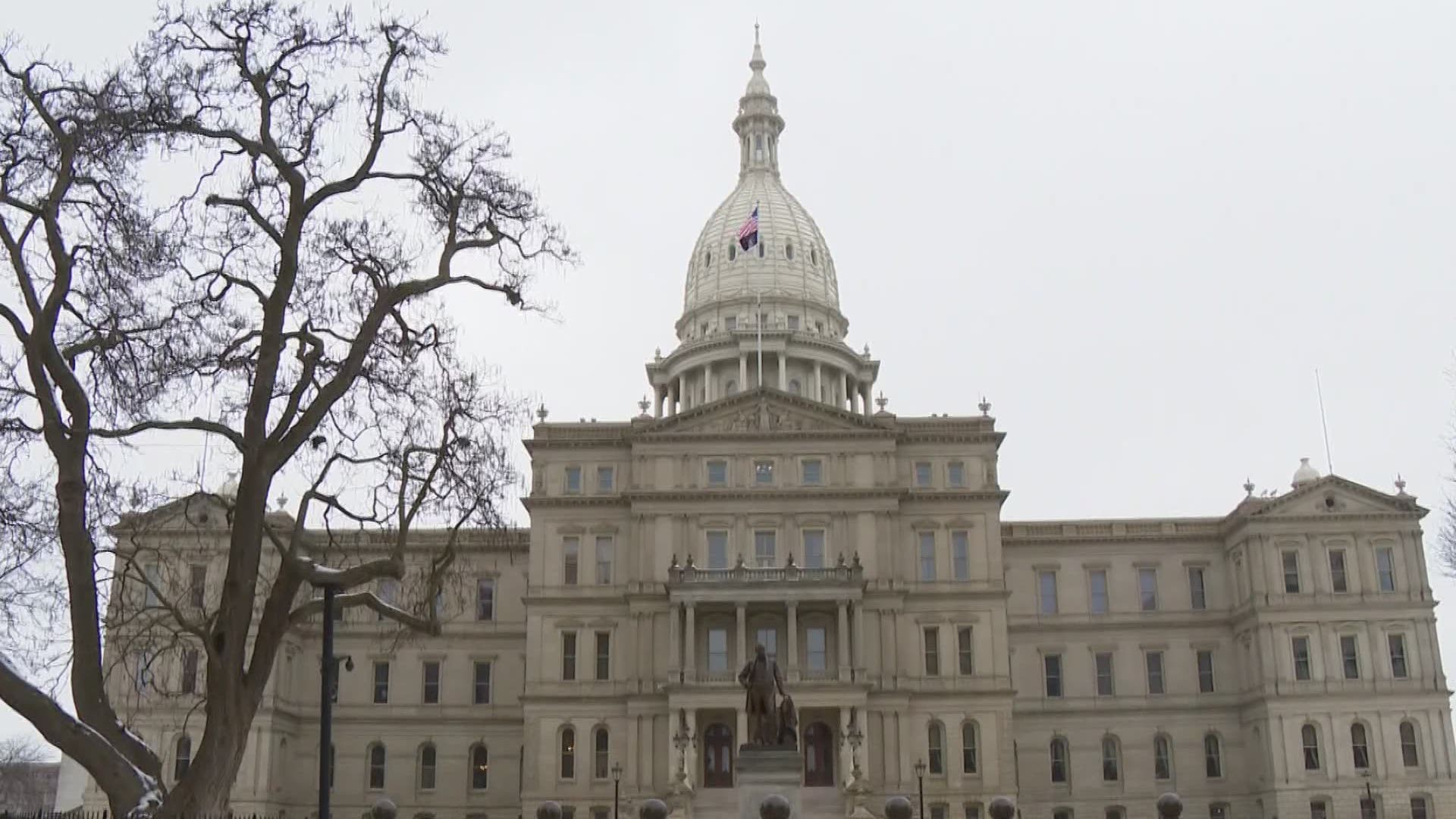GRAND RAPIDS, Mich. — (GRBJ) - As early childhood educators struggle to stay in business, especially due to COVID-19, Gov. Gretchen Whitmer’s proposed fiscal year 2022 budget includes $370 million to make quality child care more affordable and accessible for Michigan families.
Whitmer’s FY 2022 budget proposal, released last month, prioritizes child care as a strategy to support early childhood outcomes and to help Michiganders overcome obstacles to workforce participation.
The budget recommendations include $370 million that will temporarily increase the income eligibility threshold from 150% to 200% of the federal poverty line and temporarily waive families’ out-of-pocket copays through fiscal year 2022. Additionally, there is a 10% increase in hourly rates to child care providers.
The governor’s recommendation also includes $2.2 million for the tri-share pilot program, a pilot developed by a coalition led by the Grand Rapids Chamber of Commerce that would split the cost of child care evenly between the family, the employer of the family and the state.
“We applaud the governor for her continued dedication to our child care industry and appreciate the continued backing of the nation-leading tri-share pilot program,” the Grand Rapids Chamber said. “We look forward to our ongoing partnership with the coalition, the governor’s office and other key stakeholders to make Michigan a leader in child care policy and innovation.”
Annemarie Valdez — president of the Grand Rapids nonprofit First Steps Kent, which is working to build a comprehensive early childhood system in Kent County — said the business sector depends on child care, and she believes there will be bipartisan support for these increased investments in the FY 2022 budget.
“(For) opening up our economy, it’s essential to have child care for families so that people can go back to work and feel confident that their young ones are in quality child care,” Valdez said. “It really is one of those issues that crosses party lines, and we see how important it is, especially when the pandemic first hit and many child care providers had to close. It was critical because they didn’t have children or income at that time. So with the governor’s new budget, to see that she put about $370 million into the budget for child care, that means that more than 100,000 — possibly 150,000 — more families will be able to access child care in an affordable way.”
A 2020 fact sheet from Great Start to Quality showed that across the state, the number of child development centers in operation dropped from 4,534 in 2019 to 777 as of July 2020, with 333,335 spaces available in 2019 and only 67,820 spaces available in July 2020. The number of family/home-based child care providers fell from 4,073 in 2019 to 2,206 as of July 2020, with only 19,242 spaces available in July, compared to 34,314 in 2019.
Meanwhile, there are 687,686 children under the age of 6 in Michigan, with 439,038 of those having parents in the workforce, and 309,429 of those at or near the poverty level.
The cost of child care runs in the multi-thousands per year and can range from 27% to 79% of a single parent’s income depending on the child’s age and the number of children enrolled, and from 7% to 21% of a dual-parent household’s annual income, according to the Great Start fact sheet.
Valdez said Kent County saw a rate of about 30% of child care providers closing per month even before the pandemic due to increasing costs and insufficient funding. A child care alliance and crisis team First Steps Kent helped form during the pandemic was able to connect providers to critically needed CARES Act funding, other grants, supplies, PPE and more in order to keep child care providers in business. The number of open licensed providers went from about 650 in March 2020 down to about 200 in April, but the alliance has been able to bring almost all of them back online to date.
Still, a pair of local providers say they will need more help to remain open and providing top-notch care.
Isabel Blair, owner/director at Mi Casa Es Su Casa Bilingual Family Child Care in Byron Center, said one of the biggest challenges in her situation besides enrollment numbers is the inability to pay competitive wages to her staff, who can make more money per hour at McDonald’s or Target than she can afford to pay them.
She said the proposed investments in the FY 2022 budget would help defray the increasing costs of cleaning supplies, food, liability insurance, health insurance and wages at a time when more workers are needed to keep ratios low and everyone properly socially distanced.
Even with the proposed investments, Blair said she believes the way child care is perceived needs to change, and professional educators such as herself need to receive more long-term, systemic support.
Starr Morgan, executive director of Grand Rapids Early Discovery Center, agreed. She said last year, she received two rounds of Payroll Protection Program funding, Child Care Relief Fund grants from the state of Michigan and a small business grant from the Grand Rapids Chamber to stay afloat, but all of those forms of assistance are temporary, and the child care funding system needs to be updated. Instead of being looked at as babysitters or daycare centers, she believes early childhood educators need more respect and support, and to be classified as salaried, exempt teachers by the government.
“Even if everything magically resolves itself with COVID by (this) summer, there’s still so much needed to invest in early education,” Morgan said.
She said most early childhood teachers make about $25,000 to $30,000 annually, even with a four-year degree, and she contends the group of people responsible for the brain development of children in their most formative years should not have to be on government assistance in order to survive.
“Our teachers are not respected, and there’s not any kind of help from anywhere to pay teachers what they should be paid. Early education really should be included in education funding, and it’s not, other than Head Start and (the Great Start Readiness Program). … if you want good quality teachers impacting children, there has to be support from the state or from the (federal) government.”
Blair said the government policy may be “No child left behind,” but “providers are left behind.”
“In the end, it all affects the children the most,” Morgan added.
Detailed proposed investments in child care in Whitmer’s 2022 state budget proposal include:
- Increase income eligibility for the Child Development and Care (CDC) program from 150% of the federal poverty level (FPL), $39,300 annually for a family of four, to 200% FPL or $52,400 annually for a family of four from April 1, 2021 through Sept. 30, 2022. This policy makes affordable child care available to an estimated 150,000 more children. Thereafter, income eligibility permanently increases to 160% FPL, or $41,920 annually for a family of four.
- Cover required family contribution copays in the CDC program from April 1, 2021 through Sept. 30, 2022 to reduce the parent portion of child care expenses.
- Raise rates by 10% for CDC providers, recognizing the increased cost to serve children.
- Pay child care providers on enrollment rather than attendance from April 1, 2021 through Dec. 31, 2021 to provide stability and protect providers over a sudden loss of funding if children are out of care temporarily.
- Provide business stimulus grants to all child care providers to help them remain open and serving Michigan families while Michigan recovers.
- Maintain support for child mental health by continuing the network of infant and early childhood mental health consultation, which provides mental health consultation to child care providers.
- Provide for the increased administrative and information technology costs to successfully implement these investments.
This story originally appeared in the Grand Rapids Business Journal. For similar content, click here.
RELATED VIDEO:
►Make it easy to keep up to date with more stories like this. Download the 13 ON YOUR SIDE app now.
Have a news tip? Email news@13onyourside.com, visit our Facebook page or Twitter. Subscribe to our YouTube channel.


